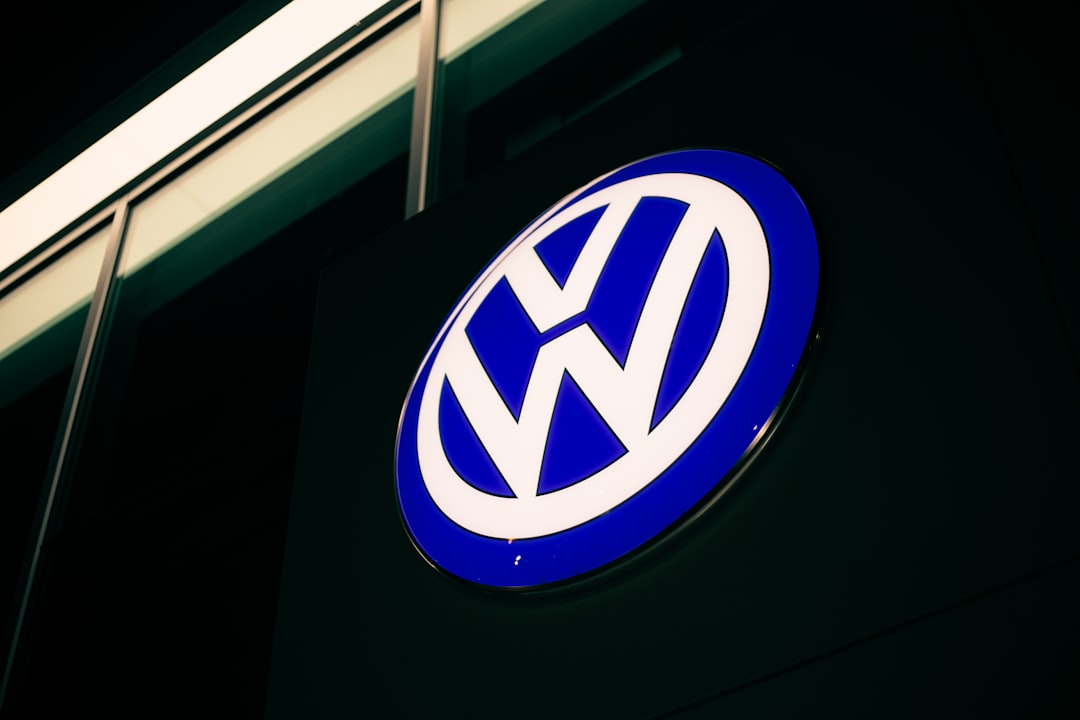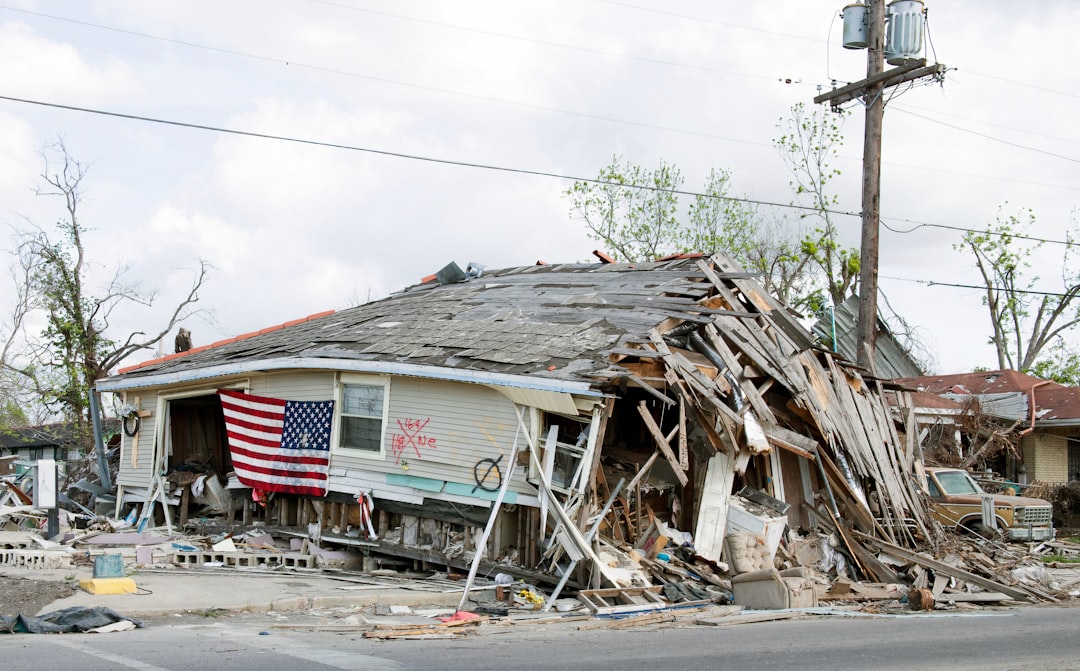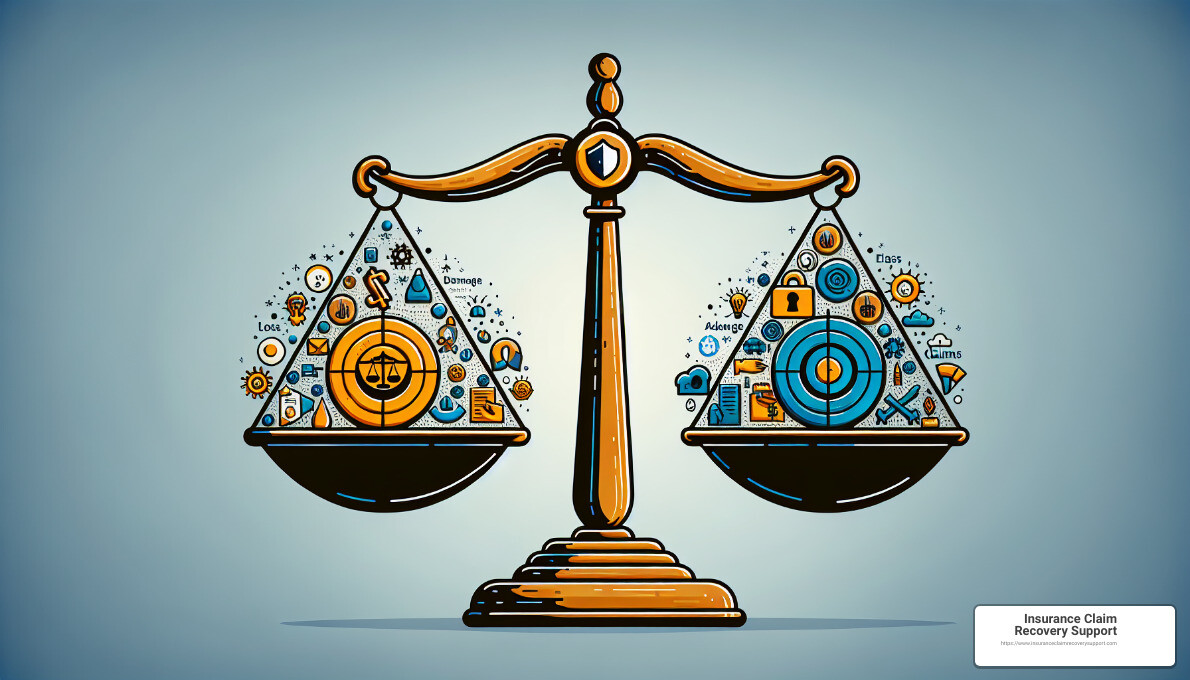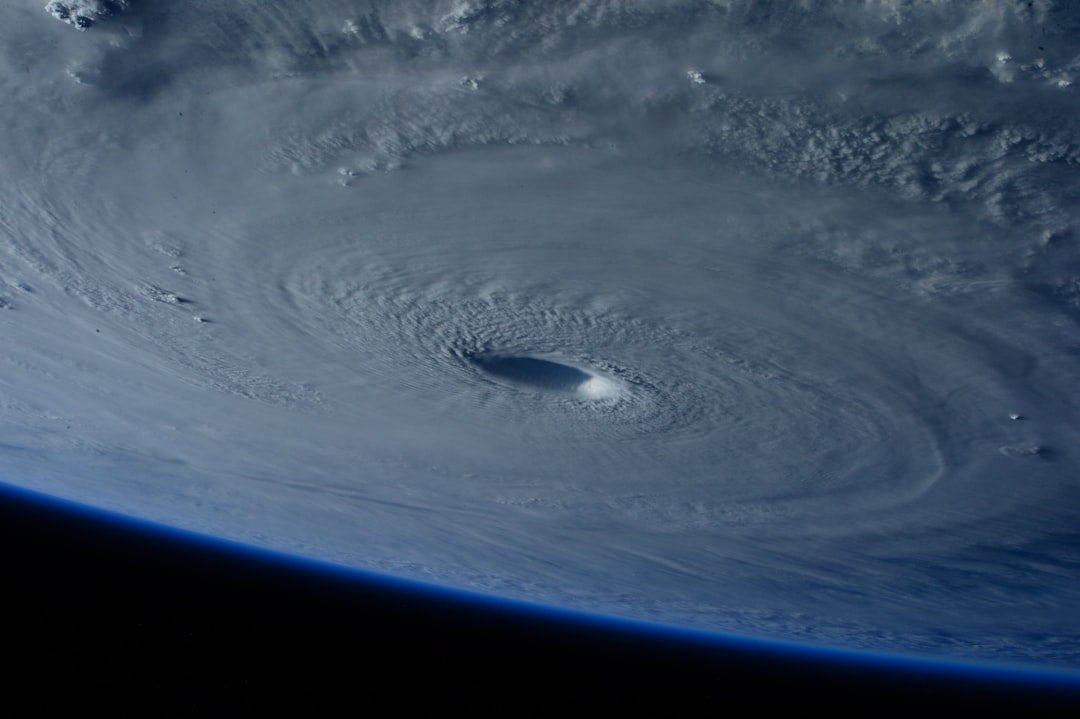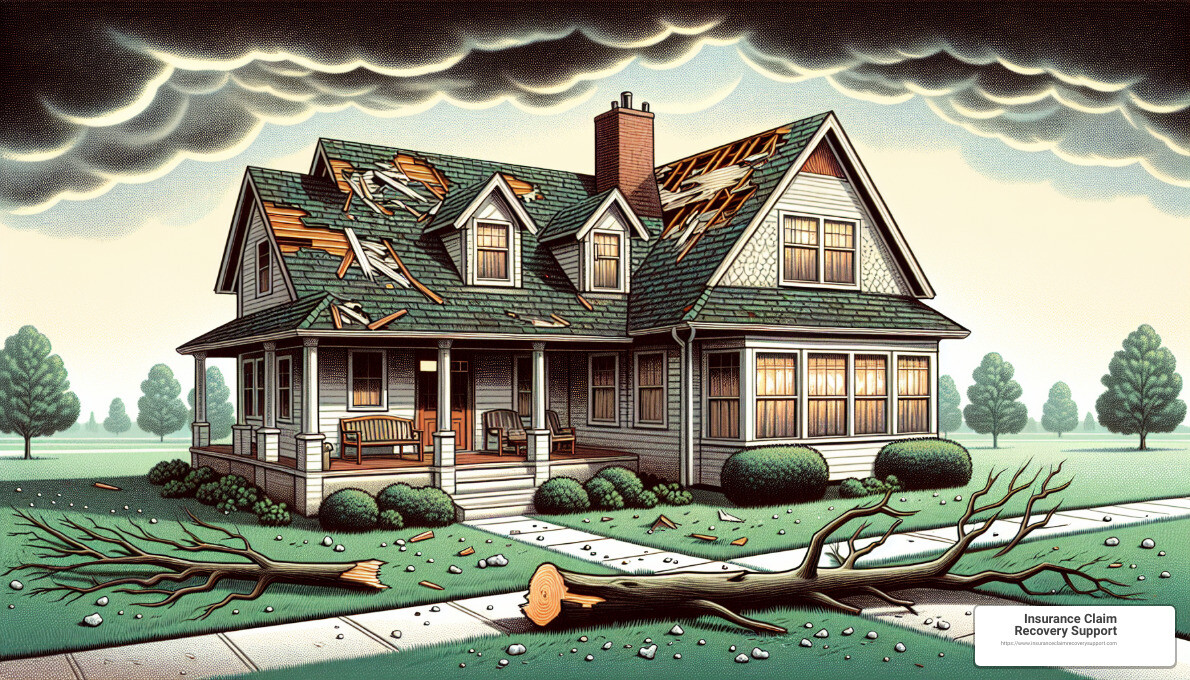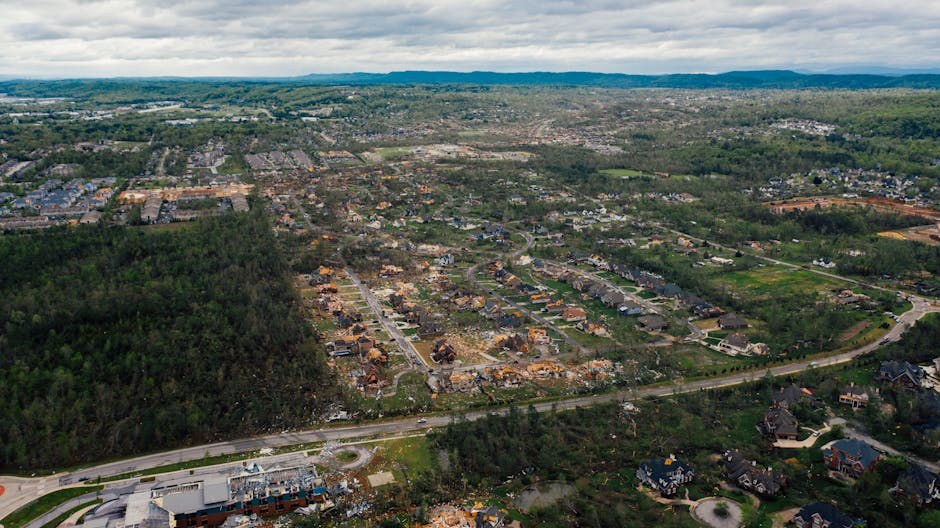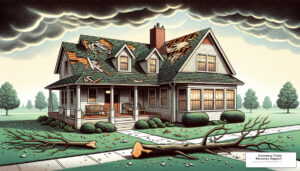Quick Guide to Understanding Commercial Property Damage:
- Immediate Steps: Ensure safety, document everything, contact insurance.
- Common Damage Types: Fire, theft, weather-related, vandalism.
- Insurance Importance: Protection against financial loss, business continuity.
For commercial building owners and those in property management, experiencing property damage can be a stressful and confusing time. Whether you are dealing with damage from a fire, a severe storm, or an act of vandalism, understanding the basics of commercial property damage and the critical role of insurance is the first step in navigating this challenging situation.
Property damage to commercial buildings not only affects the physical structure but can also impact the livelihood of those depending on the business’s operations. This underscores the importance of having comprehensive insurance coverage, which serves as a safeguard against significant financial loss and helps ensure business continuity.
However, the complexities of insurance policies and the claims process can add an additional layer of frustration. Recognizing this, be informed about the types of damages that can occur, what typically is and isn’t covered by insurance, and the initial steps to take following damage to ensure you’re on the right path toward recovery.
To help simplify this process and set you on the right track, we’ve distilled the crucial information into an easy-to-follow guide.

In the coming sections, we’ll take a closer look at identifying various types of commercial property damage, understanding the nuances of insurance coverage, and navigating the claims process. This guide aims to empower property owners with the knowledge and tools necessary for efficiently dealing with property damage.
Identifying Types of Commercial Property Damage
When you’re running a business, the last thing you want to think about is damage to your commercial property. Yet, it’s a reality many business owners face. Let’s break down the most common types of damage: Fire, Theft, Weather damage, and Vandalism. Understanding these can help you prepare and respond effectively.
Fire Damage
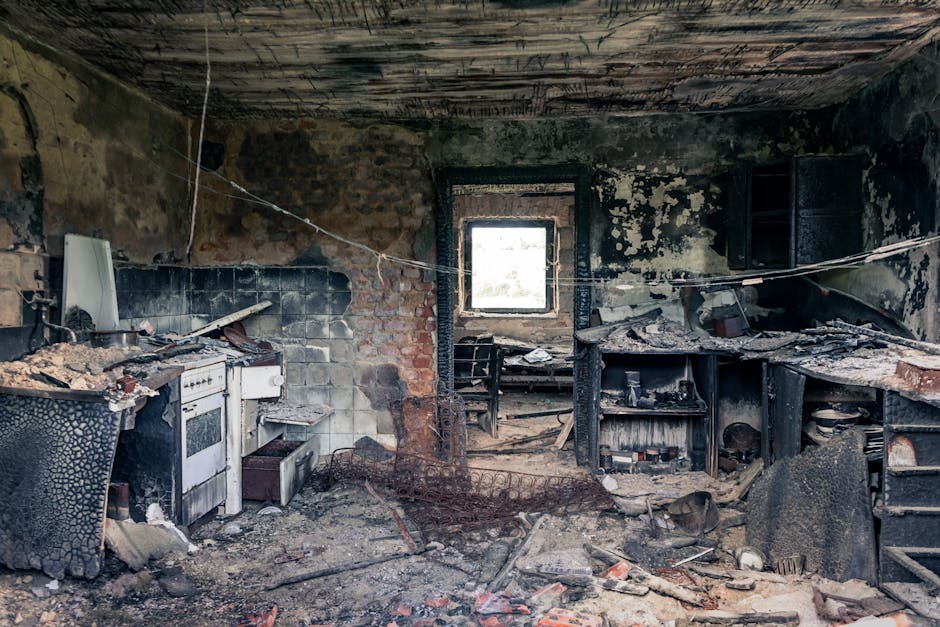
Fire is a powerful force that can destroy buildings, inventory, and equipment in minutes. The causes range from electrical faults to accidents in the kitchen. It’s not just the flames; smoke and water used to extinguish the fire can also cause extensive damage. A quick response is crucial in minimizing the damage and ensuring safety.
Theft

Theft can be a significant issue for businesses, especially those that stock valuable goods or equipment. It’s not just about the loss of items but also the damage thieves can cause while breaking in. Strengthening security measures and insurance coverage is vital in mitigating these risks.
Weather Damage
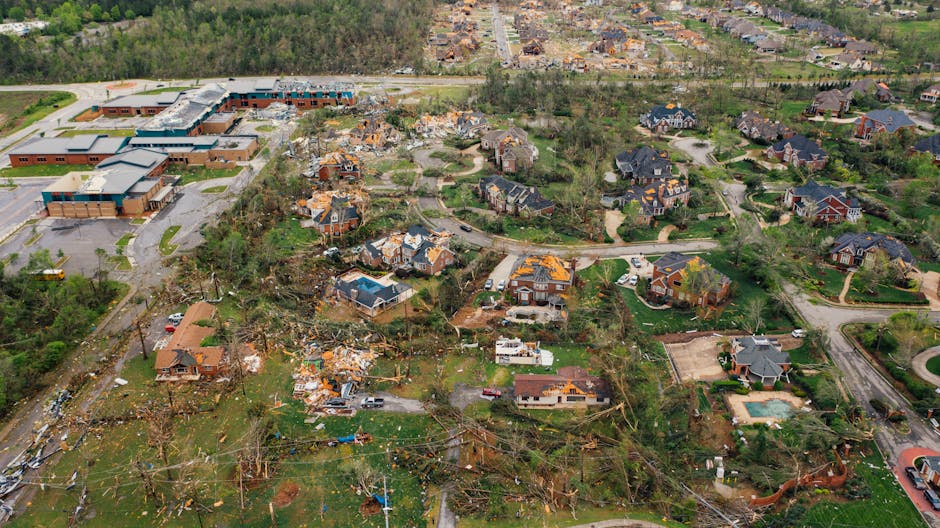
Mother Nature can be unpredictable. Storms, hurricanes, hail, and even lightning can cause substantial damage to commercial properties. Roof damage, broken windows, and flooded premises are common issues. Regular maintenance and weather-proofing can reduce the impact, but having comprehensive insurance coverage is essential.
Vandalism

Vandalism can range from graffiti to deliberate destruction of property. It not only affects the aesthetic of your business but can also lead to costly repairs. Implementing security measures like cameras and lighting can deter vandals, but insurance is your safety net when damage occurs.
By identifying these common types of commercial property damage, you can take proactive steps to protect your investment. Whether it’s through preventative measures or ensuring you have the right insurance coverage, being prepared can make all the difference. In the next section, we’ll dive into understanding commercial property insurance coverage, so you know exactly what protection you have in place.
Understanding Commercial Property Insurance Coverage
When we talk about commercial property insurance, it’s like having a safety net for your business. But not all safety nets are the same. Some are big and sturdy, ready to catch you from high falls. Others are smaller, meant for lower jumps. Let’s break down what each type of policy offers, so you can choose the best one for your business.
Basic Form Policies
Think of basic form policies as the starter pack of insurance. They cover the essentials like fires, storms, and theft. It’s like having an umbrella for a rainy day – it won’t keep you dry in a hurricane, but it’s better than nothing.
Broad Form Policies
Broad form policies take it up a notch. They cover everything in the basic form and more, such as damage from leaking appliances or the weight of snow on your roof. It’s like upgrading from an umbrella to a sturdy raincoat.
Special Form Policies
For the ultimate protection, special form policies are where it’s at. They cover all kinds of damage except what’s explicitly excluded (like floods or earthquakes). It’s like having a weatherproof, indestructible bubble around your business.
Replacement Cost Coverage
Now, let’s talk about what happens when something gets damaged. With replacement cost coverage, your insurance will pay to replace or repair your property at today’s prices, without worrying about depreciation. It’s like getting a brand-new laptop to replace the one that just died on you.
Actual Cash Value Coverage
On the other hand, actual cash value coverage takes depreciation into account. This means you’ll get back what your property was worth before the damage, minus a bit for wear and tear. It’s like selling your old, used laptop and using that money to help buy a new one.
In commercial property damage, having the right insurance coverage is like choosing the best gear for a challenging hike. You want to be prepared for anything without carrying too much weight. Whether it’s a basic form policy or a special form policy, replacement cost coverage, or actual cash value coverage, the key is knowing your business’s needs and risks. With this understanding, you can set out on your business journey with confidence, knowing you’re well-protected against the unexpected.
Next, we’ll explore what’s not covered under these policies and why know the exclusions in your commercial property damage coverage.
Exclusions in Commercial Property Damage Coverage
When it comes to protecting your business, understanding what your insurance doesn’t cover is just as important as knowing what it does. Let’s dive into some common exclusions in commercial property damage coverage. These are areas where you might need additional policies or endorsements.
Commercial Vehicles
First up, commercial vehicles. Most basic commercial property policies do not cover damage to vehicles, even if they’re parked on your property when the damage occurs. Whether it’s a delivery van or a company car, you’ll likely need a separate commercial auto insurance policy to protect these assets.
Flood Damage
Next, let’s talk about flood damage. This one catches a lot of business owners off guard. Standard policies usually exclude damage caused by flooding. If your business is in a flood-prone area, consider getting a separate flood insurance policy through the National Flood Insurance Program or a private insurer.
Damage to Customer Property
If you’re holding customer property at your business location—say, for repair or storage—it’s important to know that damage to customer property might not be covered under your standard commercial property insurance. You might need a specific bailee’s customer insurance policy to cover this risk.
Business Interruption
Business interruption insurance is another critical area often not included in basic commercial property damage policies. This coverage can help replace lost income and pay for extra expenses if your business has to close temporarily due to damage from a covered loss. It’s a lifeline for many businesses after a disaster but usually requires a separate policy or endorsement.
Equipment Breakdown
Lastly, equipment breakdown. This covers the sudden and accidental breakdown of machinery and equipment. It’s not typically included in standard commercial property policies but is crucial for businesses that rely heavily on machinery or technology. Think about adding this coverage if your business operations would be significantly impacted by equipment failure.
In Summary:
- Commercial Vehicles: Need separate auto insurance.
- Flood Damage: Requires flood insurance, not covered by standard policies.
- Damage to Customer Property: May need bailee’s customer insurance for protection.
- Business Interruption: Often excluded but vital; consider a separate policy.
- Equipment Breakdown: Not usually covered; consider adding for essential machinery.
Knowing these exclusions helps you understand the gaps in your coverage. It’s all about being prepared. If any of these exclusions are a concern for your business, talk to your insurance provider about additional policies or endorsements to ensure you’re fully protected.
Next, we’ll guide you through the immediate steps to take after experiencing commercial property damage, ensuring your safety and starting the recovery process on the right foot.
Steps to Take Immediately After Commercial Property Damage
Experiencing commercial property damage can be stressful. Yet, knowing the right steps to take immediately can ease the process and help in faster recovery. Here’s a straightforward guide on what to do right after damage occurs.
Safety First
The very first priority is safety. If the property has experienced significant damage, ensure that all occupants are evacuated to a safe location. If there’s any risk of fire, electrical hazards, or structural collapse, do not attempt to enter the building until professionals have deemed it safe.
Document Damage
Once it’s safe, start documenting the damage. Use your smartphone or camera to take clear photos or videos of all affected areas and items. This visual evidence is crucial for your insurance claim. The more detailed your documentation, the better.
Contact Insurance
Next, get in touch with your insurance provider as soon as possible to report the damage. Prompt communication is essential. Provide them with an initial overview of the damage and follow their guidance on the next steps. They will inform you about the claim process and what information they need from you.
Temporary Repairs
If it’s safe to do so, make temporary repairs to prevent further damage. This could involve covering broken windows, patching up holes, or securing doors. Keep all receipts related to these repairs, as they may be reimbursable under your insurance policy.
Remember:
- Safety is always the top priority. Never risk personal injury to document or mitigate damage.
- Document everything. Photos, videos, and receipts are your best friends in the claim process.
- Contact your insurance provider immediately. The sooner you start the process, the better.
- Make only necessary temporary repairs. Avoid making extensive repairs before the insurance adjuster has assessed the damage.
Taking these steps promptly can significantly impact the smoothness of your claim process and the speed of your recovery after commercial property damage. As you move forward, keep detailed records and stay in close communication with your insurance provider to ensure you understand each step of the process.
Filing a Commercial Property Damage Claim
When disaster strikes, knowing the steps to take can make all the difference. Let’s break down what you need to do to file a commercial property damage claim effectively.
Working with Insurance Claim Recovery Support LLC
Claim Process:
First things first, understand the claim process. It starts with you promptly notifying your insurance provider about the damage. Be detailed. The more information you provide, the smoother the process.
Documentation:
Next up, document everything. Photos, videos, receipts – they’re all crucial. This isn’t just about showing the extent of the damage; it’s about proving the value of what was lost or damaged.
Professional Assessment:
Insurance Claim Recovery Support LLC steps in here. Our team works with you to ensure a professional assesses the damage thoroughly. We know what insurance companies look for and ensure nothing is missed.
Legal Considerations:
The legal landscape can be tricky. But don’t worry, we’ve got you covered. Our team understands the ins and outs of insurance laws and regulations. We ensure your rights are protected throughout the process.
Advocacy for Policyholders:
This is where we shine. Insurance Claim Recovery Support LLC acts as your advocate. We’re on your side, ensuring your voice is heard and your claim is treated fairly.
Maximizing Settlement:
Our goal is not just to get you a settlement but to maximize it. We leverage our expertise to ensure you get what you’re entitled to, not just what the insurance company initially offers.
Taking the right steps after commercial property damage can be daunting, but you don’t have to do it alone. Insurance Claim Recovery Support LLC is here to guide you through each step, ensuring your claim is handled efficiently and effectively. With our support, you can focus on what matters most – getting your business back on track.
In the next section, we’ll explore preventative measures to minimize future commercial property damage. Stay tuned for tips on risk assessment, maintenance, security measures, and weather-proofing your property.
Preventative Measures to Minimize Future Commercial Property Damage
In commercial property ownership, being proactive is your best defense against unexpected damage and the costs that come with it. Let’s dive into some straightforward strategies to keep your property safe and sound.
Risk Assessment
First things first: understanding the specific risks your property faces is crucial. This means looking at everything from the local climate to the crime rate in your area. For instance, if your property is in a region prone to hurricanes, your risk assessment should reflect that. Similarly, if burglary rates are high, that’s a red flag to beef up security.
Maintenance
Keep it regular: Just like a car, your property needs regular check-ups to ensure everything is in working order. This includes:
- Roof Inspections: A small leak can lead to big problems. An annual check can save you a ton of trouble.
- Plumbing Checks: Water damage is a silent killer. Regular inspections can catch leaks before they wreak havoc.
- Foundation Checks: Cracks or movement in the foundation can lead to serious structural issues. Catch them early.
Security Measures
Lock it down: In areas where theft and vandalism are concerns, the right security measures can make all the difference. Consider:
- Surveillance Cameras: A visible camera can deter would-be thieves and provide evidence if a break-in occurs.
- Alarm Systems: From basic to high-tech, alarm systems alert you to unauthorized entry, potentially stopping burglars in their tracks.
- Lighting: Well-lit areas are less appealing to criminals. Make sure your property is bright and unwelcoming to unwelcome visitors.
Weather-proofing
Be prepared: Weather can be unpredictable, but your response to it doesn’t have to be. Weather-proofing includes:
- Window and Door Seals: Keep water and wind out by ensuring all seals are intact.
- Proper Drainage: Water should always flow away from your building to prevent foundation issues.
- Storm Shutters: In hurricane-prone areas, shutters can protect windows from breaking during severe storms.
Implementing these measures might seem like a lot of work, but the effort is well worth it. Regular maintenance, thorough risk assessments, robust security measures, and effective weather-proofing can significantly reduce the likelihood of commercial property damage. Not only does this save you the headache of dealing with repairs and insurance claims, but it also helps in maintaining the value of your property over time.
An ounce of prevention is worth a pound of cure. By taking steps now to minimize future commercial property damage, you’re investing in the longevity and success of your business. And should the unexpected happen, know that Insurance Claim Recovery Support LLC is here to advocate for you, ensuring your claim is handled fairly and efficiently, letting you get back to business as usual with minimal disruption.
In our next section, we’ll answer some frequently asked questions about commercial property damage, providing you with even more insights into protecting your investment.
Frequently Asked Questions about Commercial Property Damage
Navigating commercial property damage can feel like trying to find your way through a maze. Let’s simplify it with answers to some of the most common questions.
What is covered under a commercial property insurance policy?
In simple terms, a commercial property insurance policy covers buildings, inventory, equipment, tools, and sometimes outdoor items against damage or loss. The specifics, however, can vary widely. Typically, policies cover:
- Fire Damage: If a fire chars your commercial space, the costs for repairs or rebuilding are generally covered.
- Theft: Stolen equipment or inventory? Your policy likely has you covered.
- Weather Damage: Storms can wreak havoc. Damage from wind, hail, and lightning are usually included.
- Vandalism: If someone decides to “decorate” your walls with graffiti, the cleanup is covered.
Each policy is unique. It’s crucial to know what yours includes.
How does the claim process work for commercial property damage?
Filing a claim might seem daunting, but it’s more straightforward than it appears. Here’s a quick rundown:
- Report the Incident: As soon as damage occurs, report it to your insurance company. Time is of the essence.
- Document Everything: Take photos, gather receipts, and jot down notes. The more evidence, the better.
- Assessment: Your insurer will send an adjuster to evaluate the damage.
- Negotiation: After the assessment, you’ll receive a settlement offer. If it seems low, you can negotiate. This is where having detailed documentation pays off.
- Settlement: Agree on a figure, and the insurer will cut a check. This is where you can breathe a sigh of relief.
What are the common exclusions in commercial property damage coverage?
Not everything is covered under a standard policy. Common exclusions include:
- Commercial Vehicles: Your delivery van needs its own policy.
- Flood Damage: Surprisingly, water damage from flooding is not covered. You’ll need separate flood insurance.
- Damage to Customer Property: If a client’s property is damaged on your premises, that’s a job for general liability insurance.
- Business Interruption: If a disaster shuts down your business temporarily, business interruption insurance is what you’ll need, not your standard commercial property policy.
- Equipment Breakdown: For the copier that decides to quit on you, there’s equipment breakdown insurance.
Understanding these exclusions helps you prepare better and avoid unpleasant surprises.
Moving Forward
With these FAQs in mind, you’re better equipped to navigate the complexities of commercial property damage and insurance. Insurance Claim Recovery Support LLC is your ally, ready to help you maximize your claim and minimize the headache. Next, we’ll dive into preventative measures to help you avoid future damage and keep your business running smoothly.
Conclusion
Importance of Preparedness
When it comes to commercial property damage, being prepared is not just a choice—it’s a necessity. The unexpected nature of disasters means they can strike at any moment, leaving behind a trail of destruction. But with the right preparation, the impact on your business can be significantly minimized.
Preparedness involves understanding the potential risks your property faces, having a comprehensive insurance policy that covers those risks, and knowing the steps to take immediately after damage occurs. It’s about being proactive rather than reactive. This approach not only helps in quick recovery but also in ensuring the continuity of your business operations with minimal disruptions.
Role of Insurance Claim Recovery Support LLC
At Insurance Claim Recovery Support LLC, we understand the challenges you face when dealing with commercial property damage. Our role is to stand beside you, guiding you through the insurance claim process to ensure you receive the compensation you rightfully deserve.
We advocate for your rights as a policyholder, leveraging our expertise to challenge any underestimations and delays by insurance companies. Our team is dedicated to maximizing your settlement, allowing you to focus on what matters most—rebuilding and moving forward.
In conclusion, the key to effectively managing commercial property damage lies in preparedness and having a reliable partner like Insurance Claim Recovery Support LLC by your side. Together, we can navigate the complexities of insurance claims, ensuring your business not only recovers but thrives in the aftermath of disaster.

